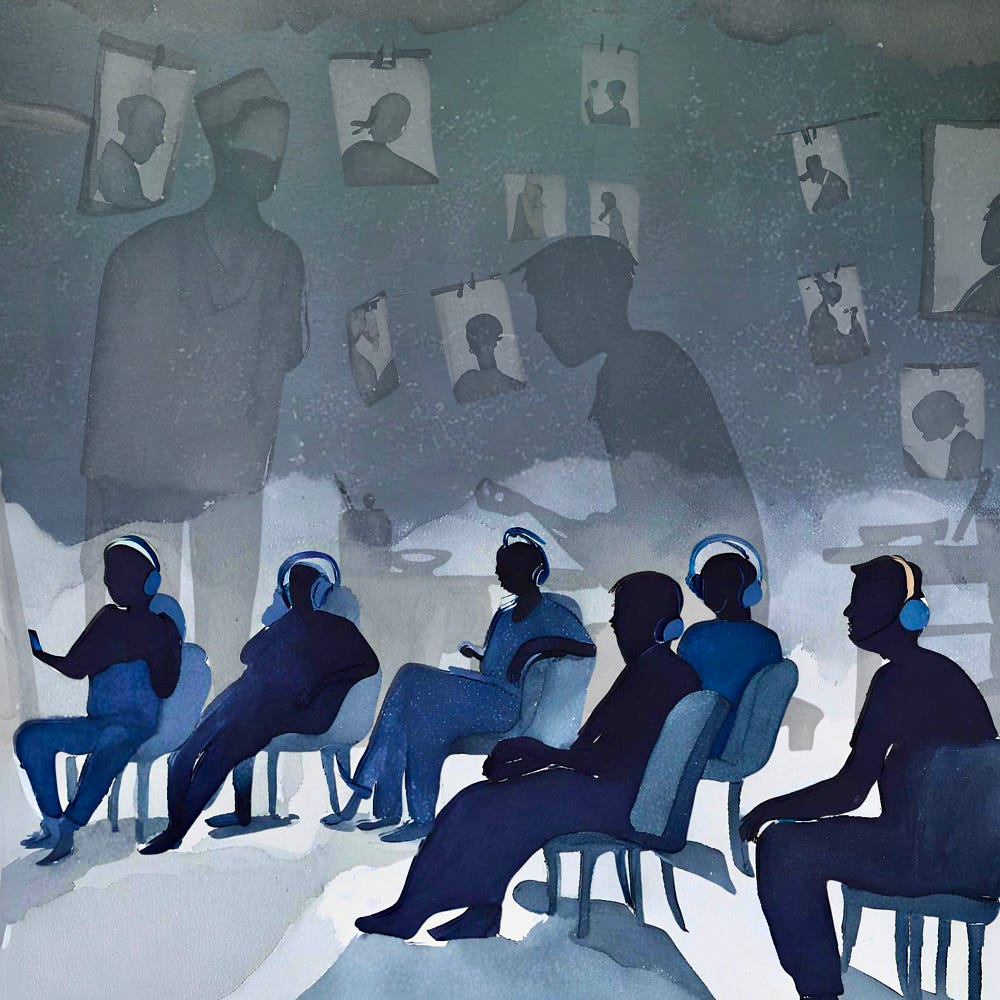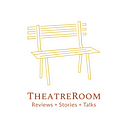I, Josef: Kaivalya Plays adapts Franz Kafka’s The Trial for an immersive ‘headphone theatre’ experience
Premiering on September 6, this binaural audio and multimedia installation is created in collaboration with Goethe-Institut/Max Mueller Bhavan New Delhi. Here’s an exclusive interview with director-designer Gaurav Singh Nijjer

By Reema Gowalla
I n 2021, when Delhi-based Kaivalya Plays’ Gaurav Singh Nijjer spoke to us, it was about an immersive IVR-powered ‘phone theatre’ performance, called Lifeline 99 99. Cut to 2024, he has directed and designed a multimedia ‘headphone theatre’ experience, based on Franz Kafka’s Der Prozess/The Trial. Presented in collaboration with the Goethe-Institut/Max Mueller Bhavan New Delhi, I, Josef is all set for its premiere on September 6, with more shows lined up the following day.
I, Josef is an immersive, binaural audio and multimedia installation that runs for 45 minutes. Instead of watching actors enact different characters on stage, the audience will be enabled to wear headphones and and enter a dark space, punctuated by elements like, “heavy footsteps, an abrupt shout, muffled voices, rustling papers, a gavel’s clack, the city’s hum, eerie silences, a ringing phone, sharp whispers, a cacophony of machinery, a jarring telephone ring, frantic scribbling, clang of a metal gate and a helpless scream” — all symbolising the unresolved fate of the protagonist, Josef K.

This compelling dramaturgical experiment forms part of Goethe-Institut’s yearlong programme that celebrates Kafka’s centenary, with special focus on his timeless classics. Meanwhile in Bengaluru, noted theatre personality Anmol Vellani has written and directed a stage adaptation of The Trial, called Innocence. It’s backed by Goethe-Institut/Max Mueller Bhavan Bangalore.
Varoon P Anand has written and adapted I, Josef, while the piece includes voiceovers by Paul Heeren, Matthias Dünnwald, Marta Kübler, Kriti Pant, Gaurav and Varoon. In an exclusive conversation with TheatreRoom before the maiden event, Gaurav elaborated on how this ‘headphone theatre’ experience has been conceptualised and devised. Excerpts from the interview:
Q. What makes I, Josef a unique experience for the theatre audience?
A. I, Josef is an experiential performance. Members of the audience will walk into a dark room and put their headsets on, following which they will get to hear the 3D sound of Kafka’s The Trial. There’ll be no actors performing on stage as such. Through this project, we are trying to make something that is more sustainable and can be taken to different places — from schools to people’s living rooms. Thus, making theatre a bit more accessible. It’s kind of a response to the difficulties that one faces in the world of the theatre. After a play is made, staging it at different venues or even touring with it often becomes an uphill struggle for many. I, Josef has been designed as a multimedia installation performance that can easily travel to various locations and can be adapted for any room.
Q. There have been several adaptations of The Trial globally, but I, Josef seems to be quite different from all that. Tell us about this immersive multimedia installation…
A. At Kaivalya, we have always been interested in staging work that is critical of the times that we are living in. Kafka wrote The Trial in 1914–1915, and it was published posthumously in 1925 [he died in June 1924]. Interestingly, even 100 years later, a lot of the things mentioned in the script are still relevant, at least in today’s India. For instance, this idea of someone being arrested for an unspecified crime and the entire legal process being so opaque — these are quite telling of the times we live in. We recently had the New Criminal Laws [Bharatiya Nyaya Sanhita, 2023] being introduced that have really overthrown and challenged a lot of existing understanding around the space. Simply put, The Trial is very relevant to us in the current day and age.

It’s true that there have been numerous adaptations of this Kafka masterpiece in our country and around the world. Both Varoon and I also love the text a lot. But for the average audience, to come in and watch a play with so many different characters and their underlying emotions is a bit difficult. So, we wanted to use the concept of oral storytelling, or rather an audio-based storytelling format, to break down the text. Basically, what happens in this experience is that the audience member walks into a dark room, puts the headphones on and becomes Josef, the protagonist. There’s no physical performance as such. All the characters speak to the audience via these headphones. By putting the audience in the shoes of Josef, we intend to portray it as a gesture of empathy. Through this, we are able to have them or at least support them in developing an understanding of what’s going on in the character’s mind. There is a difference between reading the text from a third person’s perspective — that the policeman puts Josef in handcuffs and shoots him — and experiencing it as a first person. That, we believe, really changes the perspective or the potential to understand what’s really happening in the script.
Q. Tell us about your Kaivalya Plays’ collaboration with Goethe-Institut on this piece..
A. Kaivalya Plays has had a long-standing association with Goethe-Institut. They are celebrating 100 years of Kafka. They have been working on this programme for a long time, spotlighting different aspects of the writer’s legacy. When we approached them with this idea, they seemed very interested in it, mostly because this experience will be available both in English and German. In this piece, I am doing voiceover in German, along with Goethe-Institut New Delhi’s three German staff members. I, Josef is an immersive experience, complete with an audio-visual track. In terms of language-learning, this installation can be very accessible and useful. So, if you are a student of German language or if you’re someone who has read and studied Kafka, this piece can be an interesting way of getting introduced to the world of The Trial.
It’s been incredibly helpful to be collaborating with Goethe-Institut on this project. Together, we have read and recorded the piece, followed by editing the script, keeping in mind how Kafka would say it. The piece is fully funded by Goethe-Institut.
Q. What are the kinds of changes you made to the original script in order to make it more relevant in today’s time?
A. We have adapted the script, which comprises around 100 pages, depending on the translation. We brought that down and re-edited the entire script for it to become a first-person narrative. All the characters now speak to the listener — who is Josef. Overall, it’s been really fun, but there are challenges too. The text is mostly written in monologish style, meaning there are drones of text, where Josef is just asking, “Have I done wrong?”, “What have I done?”, “Why am I doing this?”. That feeling of despair is created through the text. It was not easy to recreate the same using audio and sound effects, without having to necessarily keep repeating words.
The other challenge was to simplify the text and turn it into a 45-minute experience. We felt it’s a reasonable time for an audience to sit in one place with the headphones on and listen to something in one go. In The Trial, there are a number of small characters that only appear briefly. For our piece, we ended up rewriting some characters — by combining a few, while eliminating the others.

Varoon adapted the script, because he had read The Trial when he was in school. So, why are people still gung-ho about it? Maybe because, we all just love the existential dread, generally. While working on the script, we discussed at length about the novel and its characters. One may find a lot of violence against women and certain characters in the original text. So, we made a conscious choice to take those out, because reading about it and having a third-person perspective can be very different from something like that happening to you during an immersive experience. It could be quite triggering for the audience. Considering the same, we even changed the gender of some of the characters. For instance, in our adaptation, Dr Huld (the lawyer) is played by a woman. Power is gendered in the world we live in, but we have tried to strike a balance in I, Josef.
Q. What happens when you enter the installation?
A. Audience members step inside a dark room, which is strewn with fabrics and chairs. There’ll be some smoke as well. They will come and take a chair and put on these unique silent disco headphones. They can choose whether they want to hear the piece in English or in German. The audio will play live for the 30 people, who are seated in this room together, accompanied by projections and visual projection mapping. The audience will then experience the world of Josef by listening to the audio as well as seeing projections that complement the storytelling. The immersiveness comes from this new technology that we’re using called binaural audio. It’s essentially in 3D format, where the sound comes from all directions. The 3D audio really lets you visualise the world of the play. At any given point, there are at least two-three voices that are talking to you. When I say you, I mean both the audience and Josef, because the listener is him.
You can be a part of this immersive multimedia experience on September 6 (4pm, 5pm, 6pm and 7pm); September 7 (10am, 11am, 12pm and 3pm, 4pm, 5pm, 6pm and 7pm) at Goethe-Institut / Max Mueller Bhavan New Delhi. Entry is free entry with prior registration.

